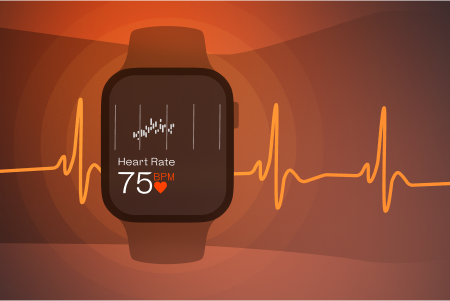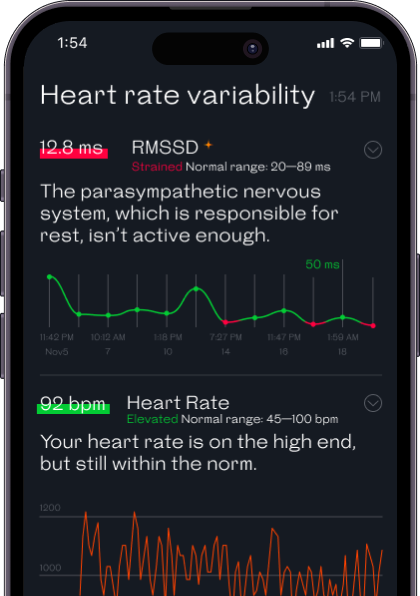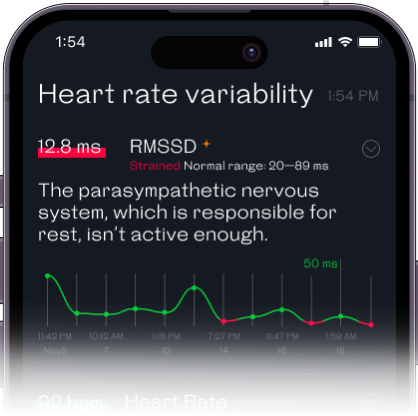


Welltory is the Ultimate HRV App




Home » Heart Rate Variability » Target Heart Rate

Staying physically active is essential for maintaining good health, and monitoring your heart rate during exercise can help you achieve optimal results. Your target heart rate is a critical component in determining the intensity of your workouts. Let’s delve into what target heart rate is, how to calculate it, and how Welltory can assist in tracking it to maximize the effectiveness of your exercise regimen.
Your target heart rate is the range of heartbeats per minute during exercise that allows you to gain the most benefits without overexerting yourself. It is typically measured as a percentage of your maximum heart rate, which is the highest number of times your heart can beat in a minute. Exercising within your target heart rate zone ensures you are working at the right intensity, promoting cardiovascular health and boosting your fitness level.
Exercising within your target heart rate zone ensures that your workouts are both safe and effective. It helps you:
Get Welltory
to track heart rate
Get Welltory
to track heart rate



As we age, our maximum heart rate declines, affecting the optimal target heart rate zone for exercise. Here, we provide a brief overview of age-specific target heart rate zones to help you customize your workouts effectively.
For children and adolescents (ages 6-17), the American Heart Association recommends a target heart rate zone of 70-85% of their maximum heart rate. This range ensures that young individuals engage in safe and beneficial physical activity, fostering the development of healthy habits early on.
For adults (ages 18-65), the target heart rate zone is typically 60-85% of their maximum heart rate. This range allows adults to engage in moderate to vigorous intensity exercise, promoting cardiovascular health and fitness. As individuals age, it’s important to consider their fitness level and any pre-existing health conditions when determining their optimal target heart rate zone.
For seniors (ages 65 and older), the target heart rate zone is generally 50-75% of their maximum heart rate. This lower range accommodates the natural decline in maximum heart rate that occurs with aging and helps reduce the risk of injury or cardiovascular strain. However, seniors should consult with their healthcare provider to determine the most appropriate target heart rate zone based on their overall health and fitness level.
Understanding how target heart rate applies to various workout styles can help you create effective and personalized exercise routines. Let’s discuss the role of target heart rate in three popular workout types: high-intensity interval training (HIIT), steady-state cardio, and recovery workouts.
HIIT alternates short bursts of intense exercise with lower-intensity recovery or rest periods. During high-intensity intervals, aim for 80-95% of your maximum heart rate to enter the anaerobic zone. This intensity level fosters improvements in cardiovascular fitness, muscular endurance, and calorie burning. Recovery intervals let your heart rate drop, allowing you to maintain the workout’s overall intensity while reducing overexertion risks.
Steady-state cardio maintains a consistent intensity level throughout the workout. Keep your heart rate within 60-75% of your maximum heart rate for this exercise type. This range promotes aerobic metabolism, enhancing endurance, cardiovascular health, and efficient calorie burning. Steady-state cardio workouts include brisk walking, jogging, cycling, and swimming.
Recovery workouts, or active recovery and low-intensity workouts, help your body recuperate from more intense exercise sessions. Keep your heart rate within 50-60% of your maximum heart rate for these workouts. This lower intensity range supports recovery while promoting blood flow, reducing muscle soreness, and improving flexibility. Recovery workouts encompass gentle yoga, stretching, and light swimming or cycling.
Uderstanding your target heart rate and its implications for different types of workouts is crucial for optimizing your exercise routine and maximizing health benefits. By taking into account factors such as age, fitness level, and workout style, you can tailor your workouts to align with your target heart rate zone, ensuring a safer and more effective approach to fitness. Utilizing tools like Welltory can help you monitor your heart rate and make data-driven decisions to enhance your overall health.
Remember, it’s essential to consult with a healthcare professional before starting a new exercise program, especially if you have any pre-existing medical conditions or concerns.
Welltory Team, 30 Mar. 2023
 App Store
App Store
 Google Play
Google Play
 Huawei AppGallery
Huawei AppGallery
 Galaxy Store
Galaxy Store

